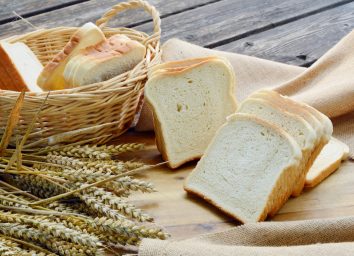Best Eating Habits to Reverse Prediabetes, Say Dietitians
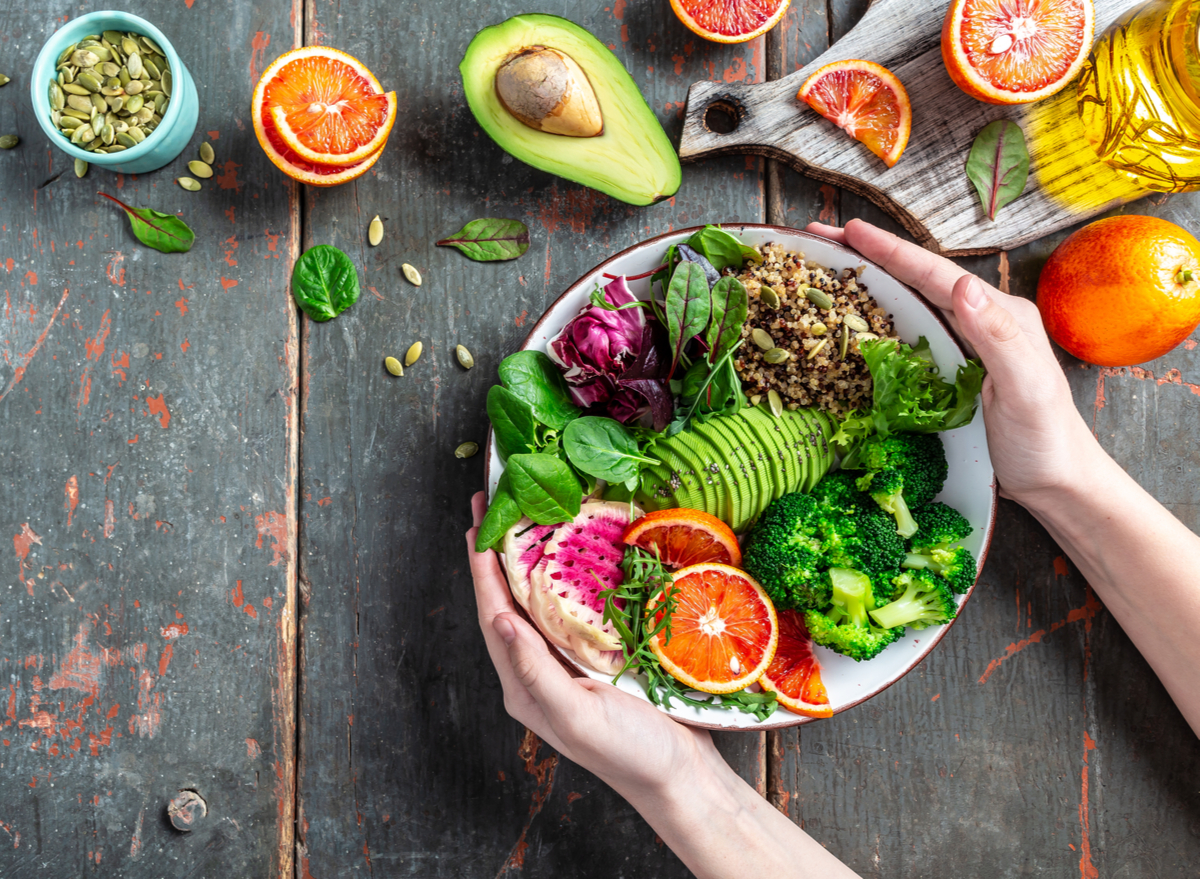
If you’re considered pre-diabetic (upwards of 30% of Americans meet the criteria, and many of them may not even know it), revamping your diet and lifestyle choices can make a tangible difference in changing your health status. Indeed, according to the CDC, it is possible to reverse prediabetes with the right lifestyle interventions.
“Prediabetes can be a scary thing to get diagnosed with, but the good news is it’s reversible. Incorporating lifestyle changes like healthy eating habits, better sleep, and physical activity can help. Take it slow and start with small, actionable steps,” says Mackenzie Burgess, RDN, registered dietitian nutritionist and recipe developer at Cheerful Choices. “If you need help setting goals or staying accountable with your diet, seek the advice of a registered dietitian nutritionist.”
Echoing Burgess, Eleana Kaidanian, RD, CDN, CPT-WFS, registered dietitian and owner of Long Island Nutritionist, a private virtual practice based in New York comments: “Reversing prediabetes or even a full-blown diabetes diagnosis is not a myth; in fact, I help my patients achieve this regularly, so I know it’s doable, you can do it too! My clients can tell you and I will too, it does take work, it does take change, however, if you set yourself up for success, I have seen A1Cs in the 8s (diagnostic of diabetes) go down to the mid 5s (healthy/normal range) achieved in 90 days with diet and exercise,” she says. “Being consistent with your efforts will not only make your efforts more habitual and easier over time but will also help you achieve the results you are looking for.”
Beyond meeting with a health professional such as a trusted doctor and/or nutritionist to come up with the best personalized approach for you, here are six simple guidelines that may help you reverse prediabetes. And for more on how to eat healthy, don’t miss Drinking Habits to Avoid If You’re Pre-Diabetic, Says Dietitian.
Eat veggies first.
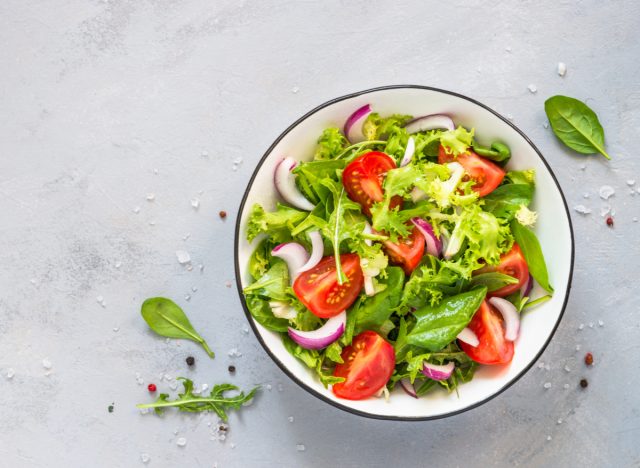
Burgess recommends starting meals with a simple side salad or colorful roasted vegetables of choice. That doesn’t sound too bad, now, does it? “Eating vegetables as the first part of a meal is a simple eating habit that can help control blood sugar levels. Research shows that those who ate vegetables before the main carbohydrate portion of their meal had lower levels of blood glucose following the meal compared to those who ate carbohydrates first,” says Burgess.
Eat the rainbow every day.
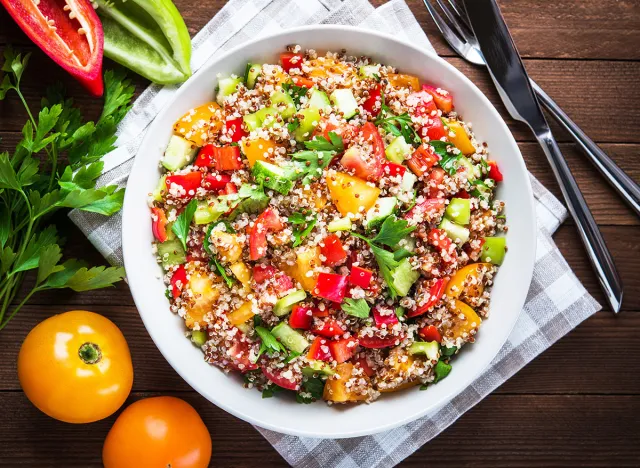
We’re not talking Skittles, friends. “Eating a variety of colorful fruits and vegetables is an attainable and fun eating habit that may help reverse prediabetes. This is because the different colors in foods represent different antioxidants, phytochemicals, and nutrients that are related to a lower prevalence of prediabetes,” says Burgess. “While it probably isn’t realistic to eat every color in one meal, try to incorporate different colored foods throughout the week, with the goal of eating as many as possible,” she continues, recommending people try topping yogurt with various berries, stirring colorful bell peppers into pasta dishes, or whipping up this rainbow quinoa salad.
Eat more healthy fats.
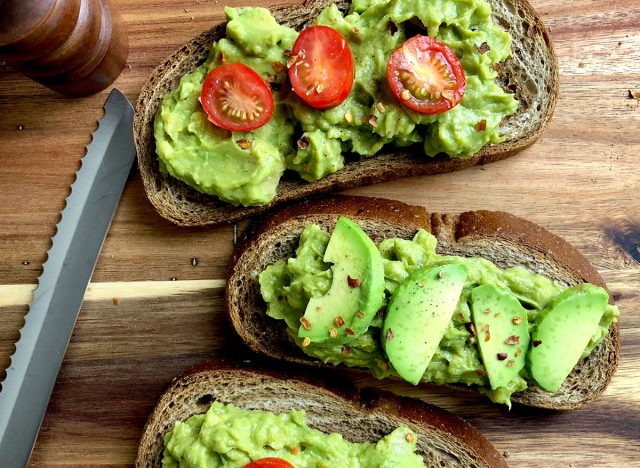
More guacamole? Sign us up. “Eating more healthy fats, such as monounsaturated fats, can improve how well your body uses insulin which may help reverse prediabetes,” says Burgess. “One study found that eating more monounsaturated fats, especially olive oil, improved insulin sensitivity in people with prediabetes. Other good sources of monounsaturated fats include avocado, nuts, and seeds. Try roasting vegetables in olive oil, topping toast with avocado instead of butter, or making nut-crusted salmon.”
Eat on schedule.
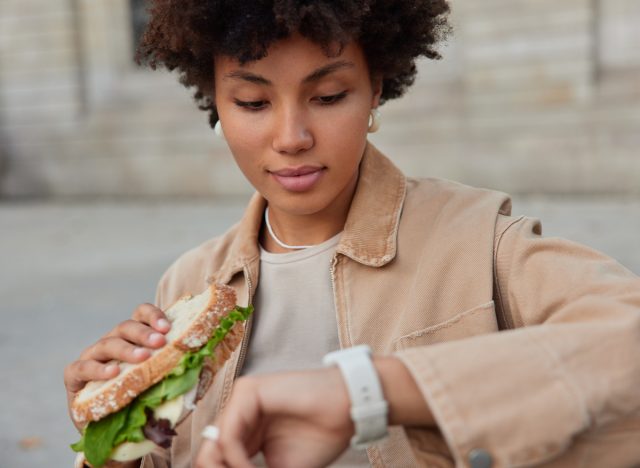
Intermittent fasting may be trendy, but listen up to learn more about meal timing to reverse prediabetes: “Fad diets such as intermittent fasting will not help you reverse your prediabetes. In fact, you should implement the opposite. Aim to eat frequently, ideally every two-to-three hours, as a schedule to keep your blood sugar from dropping low between snacks and meals and to prevent very large meals due to gaps in the diet that can cause spikes in your blood sugar,” shares Kaidanian.
“Your body wants to keep your blood sugar steady. Encouraging spikes and dives in your blood sugar levels by skipping snacks/meals, by going long periods of time without eating, then overeating is not diabetes-friendly. Rather, eating a small, balanced, portion of food every couple of hours will keep you satisfied and within your carb limits due to portion size. You will feel more satisfied and your blood sugar will be in a healthier and happier place with these changes in your eating schedule,” she elaborates, also pointing to this research.
Choose complex foods.
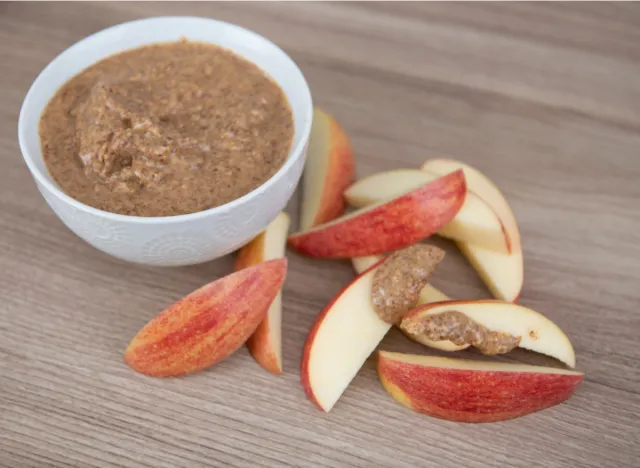
Hear ye, hear ye: “Not all carbs are created equally or affect your blood sugar the same way,” proclaims Kaidanian. “When selecting snacks and meals, aim for high fiber carbohydrates in the form of fruits/vegetables (especially with the skin intact), beans, nuts, seeds, and whole grains. Fiber is rough and tough—think wheat bread vs. soft fluffy white bread—and adding fiber to your diet is more work for your body to break down into energy. That work and time factor results in the slow release of sugar into the bloodstream over a longer period of time, therefore preventing a spike that could arise from a no fiber carb such as juice,” she explains. As Kaidanian breaks it down, choosing a high-fiber food such as an apple with the peel is more complex than a simple carbohydrate, in this example, apple juice.
“However, you don’t have to stop there. By choosing not to eat a stand-alone carb even if it is a high-fiber one, and adding a protein or a fat to it, you can make the snack or meal choice even more complex,” she adds. For instance, try a small apple with the peel and a spoon of natural unsweetened nut butter, recommends Kaidanian. “By doing so, your body will respond with better glycemic control of the foods you just put into your body to break down into energy,” she concludes, highlighting this research. She had us at apple with almond butter.
Have a carbohydrate allowance for each time you eat
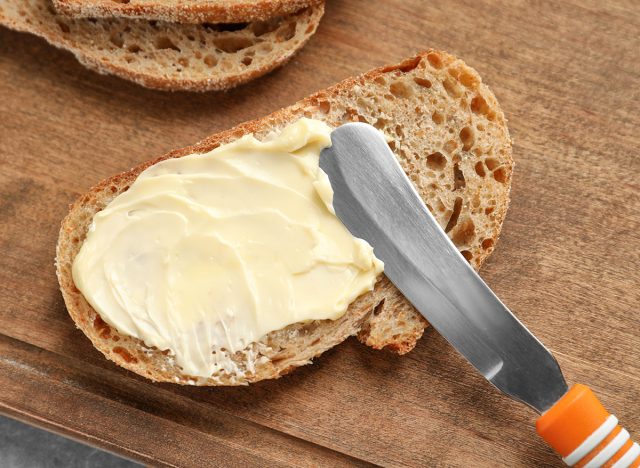
“There are three macronutrients that make up all the energy we receive from our diet, specifically, proteins, fats, and carbs,” explains Kaidanian, noting that out of the three, carbs have the most impact on blood sugar. “It’s not that you should eat no carbs, rather, you must be aware of the amount of carbs you eat in a given moment. Unfortunately, our Westernized diet is very carb-heavy. You likely don’t need to go on a low-carb diet, it’s just that most people are eating a supercharged carb-laden diet. In comparison, it, therefore, may seem that you need to make a big shift, but in reality, you should just keep track and stay within range of your carb requirements,” she says, citing this research and these CDC carb-counting guidelines.
“Carb counting is a method I use with my clients to understand ballpark numbers for carbohydrate sources and how many grams to aim for in a given sitting.”
For snacks, Kaidanian recommends 15 grams of total carbohydrates (this is equivalent to 1 carb count) and for meals a range of 15-30 grams.
“Remember, you can and should add proteins and fats for more volume and satiating food combos. An example of a snack within this range could be one or two hard-boiled eggs (0-1 gram of carb) plus a cup of fresh bell peppers (9 grams of carbs).” To learn more about carbs, check out How to Calculate Net Carbs for Weight Loss.


